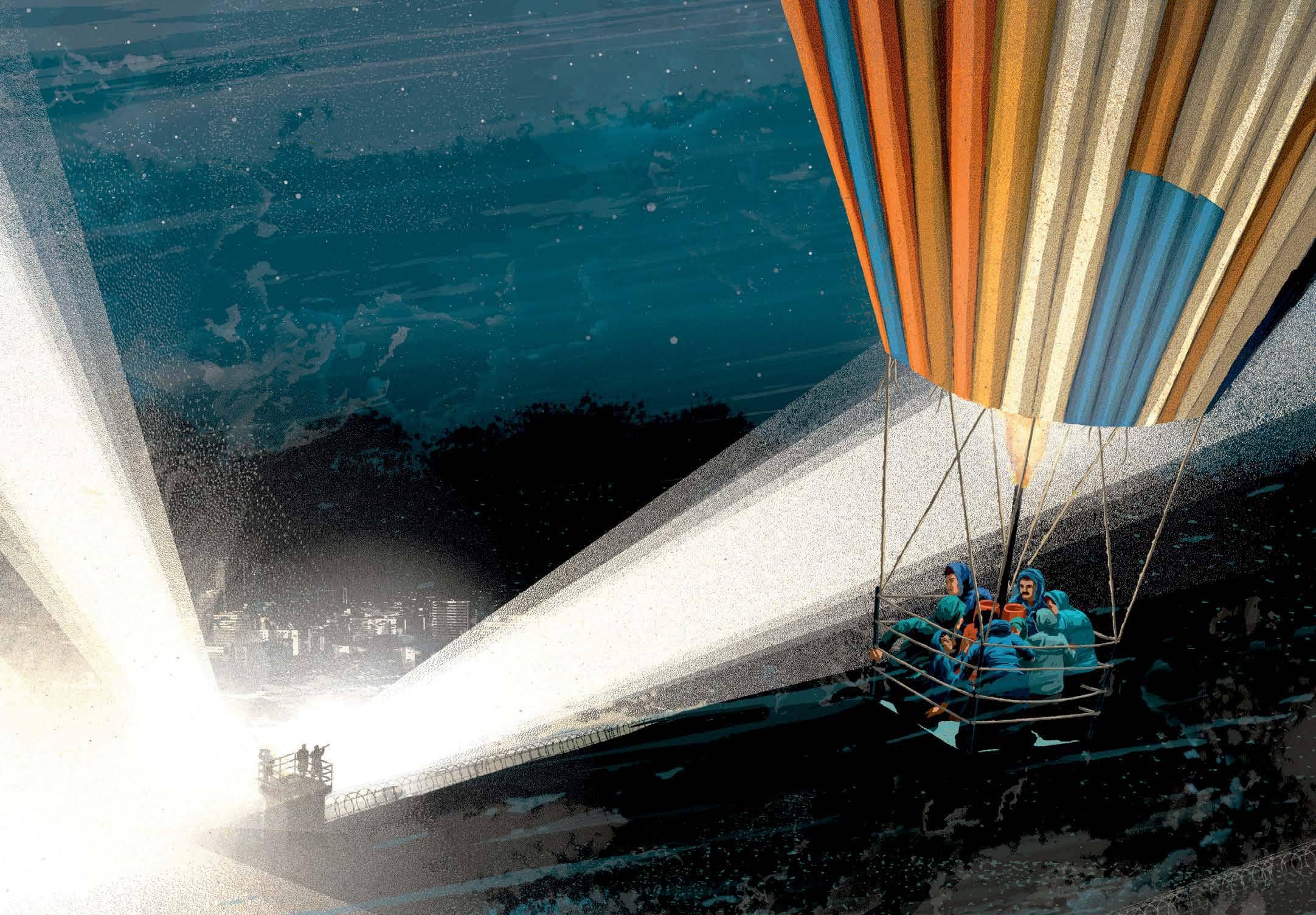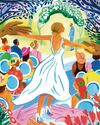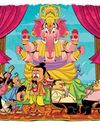
MARCH 1980
WHEREVER PEOPLE ARE CAGED, some will always make a break for freedom. Over the years thousands risked death and imprisonment to flee the oppressive conditions of communist East Germany. They climbed the hated Berlin Wall, tunnelled beneath border barriers and dived underwater at night to swim to asylum in the West. Many of them never made it. Some paid the ultimate penalty and died in the minefields or strung out on the wires of the 'death strip' along the border. But still they tried.
This is the remarkable story of two East German families, who, 10 years before the Wall would come down, built a hot-air balloon—and dared to ride the wind to freedom.
SETTLED AMONG CORNFIELDS and green valleys with pine forests marching towards the horizon, the towns of Pössneck and Naila seemed identical in the 1970s. Geographically they were only 64 kilometres apart. Yet politically their inhabitants were not even on the same planet.
Naila was in West Germany, and its 9,700 residents were free. But Pössneck, with 20,000 people, was in East Germany. Television aerials on the rooftops of houses there faced toward Naila; it was through TV that people in Pössneck were constantly reminded of how much better off people were on the other side of the Iron Curtain.
On 7 March 1978, in his home on the outskirts of Pössneck, 35-year-old electrical engineer Peter Strelzyk sat with his friend Günter Wetzel, a 22-year-old bricklayer and truck driver.
This story is from the {{IssueName}} edition of {{MagazineName}}.
Start your 7-day Magzter GOLD free trial to access thousands of curated premium stories, and 9,000+ magazines and newspapers.
Already a subscriber ? Sign In
This story is from the {{IssueName}} edition of {{MagazineName}}.
Start your 7-day Magzter GOLD free trial to access thousands of curated premium stories, and 9,000+ magazines and newspapers.
Already a subscriber? Sign In

From the King's Table to Street Food: A Food History of Delhi
Pushpesh Pant, one of India’s pre-eminent food writers, is back with a comprehensive food history of the capital.

Who Wants Coffee?
It’s bitter—but beloved around the world

Prevent The Pain Of Shingles
You don't have to suffer, as long as you take two important steps

The Best And Worst Diets For Your Heart
Dozens of diets are touted as ‘best’, but it’s easy to lose track of the fact that healthy eating needs to be about overall wellness, not just weight loss.

ME & MY SHELF
Journalist Sopan Joshi has worked in a science and environment framework for nearly three decades. His book Mangifera indica: A Biography of the Mango (Aleph Book Company) synthesizes the sensory appeal of India's favourite fruit with its elaborate cultural roots and natural history. He writes in English and Hindi.

SWITCHED
In 1962, nurses at a small Canadian hospital sent home two women with the wrong babies. Then, 50 years later, their children discovered the shocking mistake.

ECHOES OF THE PAST
A VISIT TO THE ANCIENT BARABAR CAVES IN BIHAR REVEALS A SURPRISING CONNECTION TO A LITERARY CLASSIC

Fathers of the Bride
A young woman finds a unique way to honour the many men who helped her survive her childhood

Fiction's Foresight
British-Bangladeshi author Manzu Islam's works reveal startling parallels to recent political upheavals in Bangladesh, begging the question: Besides helping us make sense of our world, can stories also offer a glimpse into the future?

It Happens ONLY IN INDIA
The Divine Defence Picture this: A tractor in Rajasthan‘s Banswara district,a group of loan agents closing in to seize it and the defaulting farmer and his family standing by.